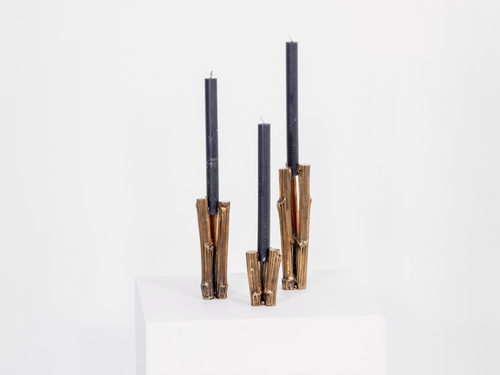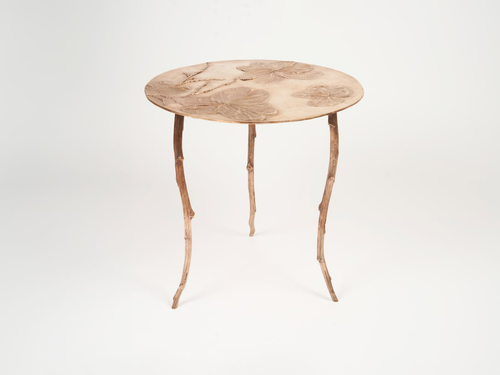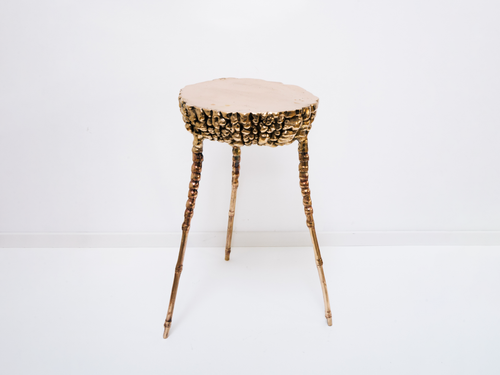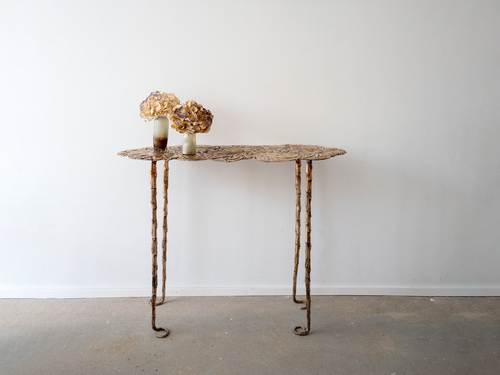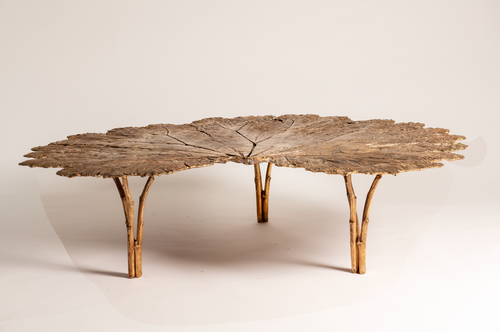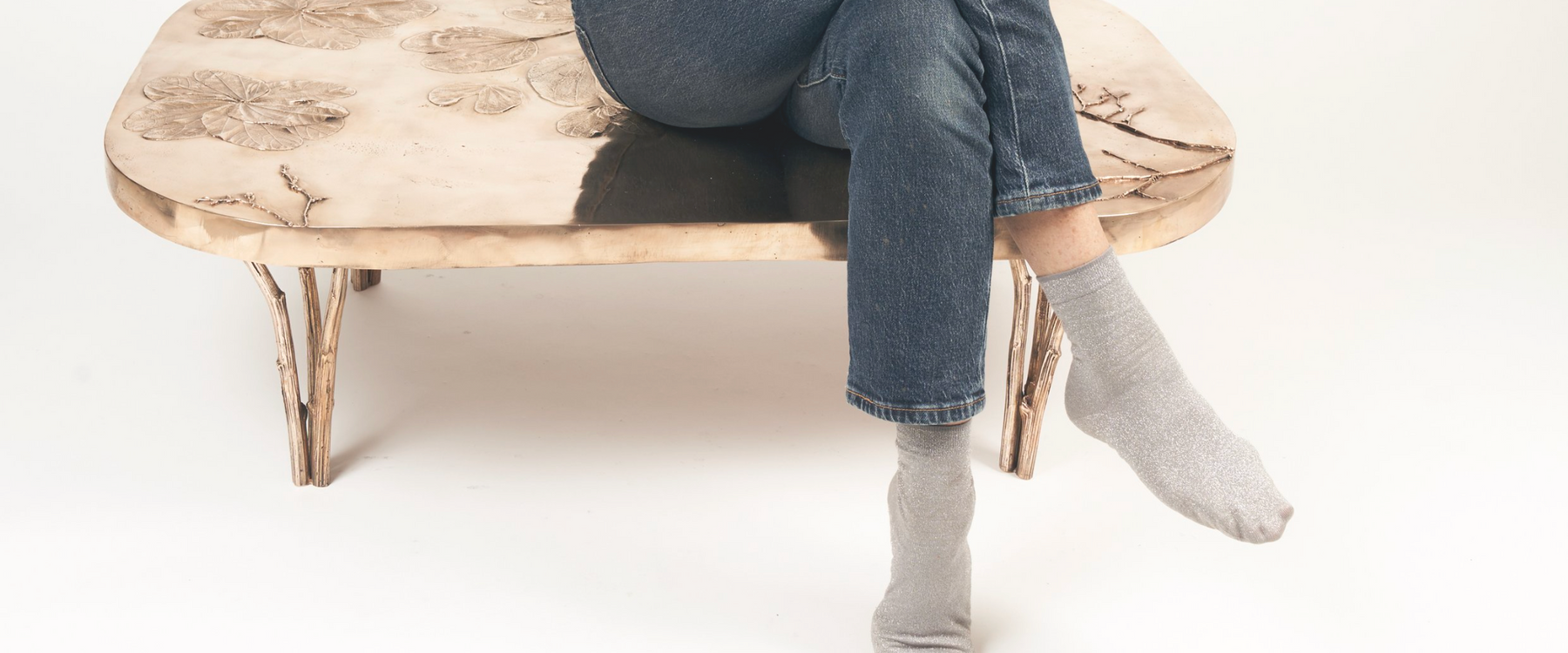
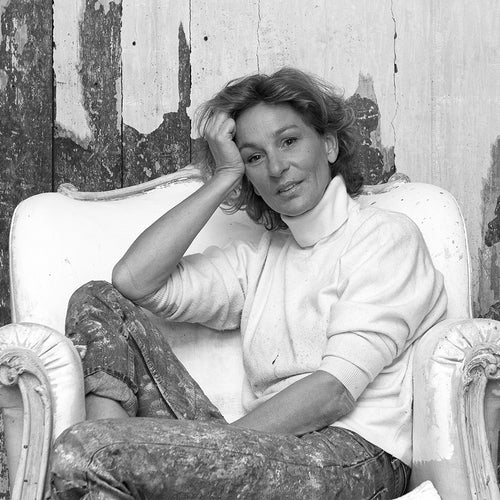
Clotilde Ancarani
Clotilde Ancarani
Meeting Clotilde Ancarani in her studio nestled in a back house in Brussels, Belgium is to dive into a universe where nature invites itself with subtlety. This Italian artist, born in 1965, has been working for over thirty years, creating bronze sculptures that combine functionality and aesthetics.
Clotilde Ancarani's sensitivity to nature is palpable in her creations, where she sublimates the fragility of life by creating functional furniture, chandeliers, tables, and stools clad in gunnera or other fern leaves, molded in bronze. The contrast between the rigidity of the metal and the delicacy of the forms creates a striking tension, testifying to the artist's originality and creativity.
Beyond the aesthetics of her works, Clotilde Ancarani seeks to express the contradictions of a woman's life, as a wife and mother, as well as the difficulties of existence. Her mastery of bronze, a powerful and durable material, allows her to represent fragile and ephemeral subjects, inviting the viewer to reflect on their own vulnerability.
Clotilde Ancarani
Meeting Clotilde Ancarani in her studio nestled in a back house in Brussels, Belgium is to dive into a universe where nature invites itself with subtlety. This Italian artist, born in 1965, has been working for over thirty years, creating bronze sculptures that combine functionality and aesthetics.
Clotilde Ancarani's sensitivity to nature is palpable in her creations, where she sublimates the fragility of life by creating functional furniture, chandeliers, tables, and stools clad in gunnera or other fern leaves, molded in bronze. The contrast between the rigidity of the metal and the delicacy of the forms creates a striking tension, testifying to the artist's originality and creativity.
Beyond the aesthetics of her works, Clotilde Ancarani seeks to express the contradictions of a woman's life, as a wife and mother, as well as the difficulties of existence. Her mastery of bronze, a powerful and durable material, allows her to represent fragile and ephemeral subjects, inviting the viewer to reflect on their own vulnerability.
